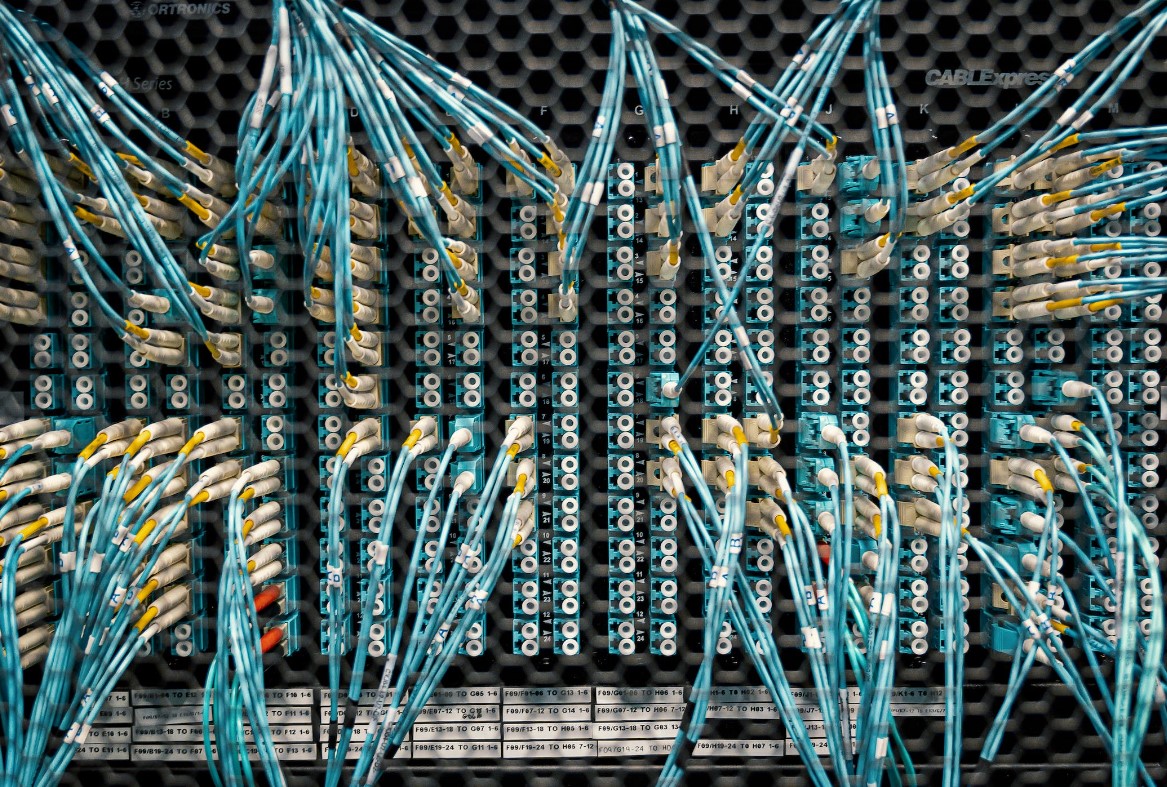Fibre optic cabling is a type of cabling that uses light signals to transmit data. It is made up of thin strands of glass or plastic that are bundled together and wrapped in a protective coating. Fibre optic cabling is becoming increasingly popular because it offers a number of advantages over traditional copper cabling, including:
- Higher bandwidth: Fibre optic cables can carry much more data than copper cables, making them ideal for high-speed applications such as streaming video and gaming.
- Longer distances: Fibre optic cables can transmit data over longer distances than copper cables without losing signal quality.
- Less interference: Fibre optic cables are less susceptible to interference from electromagnetic fields (EMF) than copper cables.
- More secure: Fibre optic cables are more difficult to tap into than copper cables, making them a more secure choice for transmitting sensitive data.
However, fibre optic cabling also has some disadvantages, including:
- Cost: Fibre optic cabling is more expensive to purchase and install than copper cabling.
- Fragility: Fibre optic cables are more fragile than copper cables and can be easily damaged if not handled properly.
- Installation: Fibre optic cabling is more difficult to install than copper cabling and requires specialised tools and training.

Advantages of Fibre Optic Cabling
- Higher bandwidth: Fibre optic cables can carry much more data than copper cables, making them ideal for high-speed applications such as streaming video and gaming. For example, a single fibre optic cable can carry up to 100 Gbps of data, while a typical copper cable can only carry up to 1 Gbps of data.
- Longer distances: Fibre optic cables can transmit data over longer distances than copper cables without losing signal quality. For example, a fibre optic cable can transmit data over a distance of up to 100 km, while a copper cable can only transmit data over a distance of up to 10 km.
- Less interference: Fibre optic cables are less susceptible to interference from electromagnetic fields (EMF) than copper cables. This makes them ideal for use in environments where there is a lot of EMF interference, such as near power lines or radio towers.
- More secure: Fibre optic cables are more difficult to tap into than copper cables, making them a more secure choice for transmitting sensitive data. This is because fibre optic cables transmit data using light signals, which are more difficult to intercept than electrical signals.
According to Paul Taylor, MD of Integral Networks “Fibre optic cabling allows for data to be transmitted across vast distances with the bare minimum of power loss and, as the data is sent via light it is incredibly secure compared to copper cabling.”
Disadvantages of Fibre Optic Cabling
- Cost: Fibre optic cabling is more expensive to purchase and install than copper cabling. This is because fibre optic cables are more complex to manufacture and require specialised tools and training to install.
- Fragility: Fibre optic cables are more fragile than copper cables and can be easily damaged if not handled properly. For example, fibre optic cables can be damaged if they are bent too sharply or if they are crushed.
- Installation: Fibre optic cabling is more difficult to install than copper cabling and requires specialised tools and training. This is because fibre optic cables are very delicate and need to be installed carefully to avoid damaging them.

Overall, fibre optic cabling offers a number of advantages over traditional copper cabling, including higher bandwidth, longer distances, less interference, and more security. However, fibre optic cabling is also more expensive to purchase and install and is more fragile than copper cabling.
When to use Fibre Optic Cabling: Fibre optic cabling is the best choice for applications where high bandwidth, long distances, and security are important. For example, fibre optic cabling is commonly used in telecommunications networks, data centres, and enterprise networks.
When to use Copper Cabling: Copper cabling is the best choice for applications where cost and ease of installation are important. For example, copper cabling is commonly used in homes and small businesses.
Ultimately, the best type of cabling for your needs will depend on your specific requirements and budget.



























